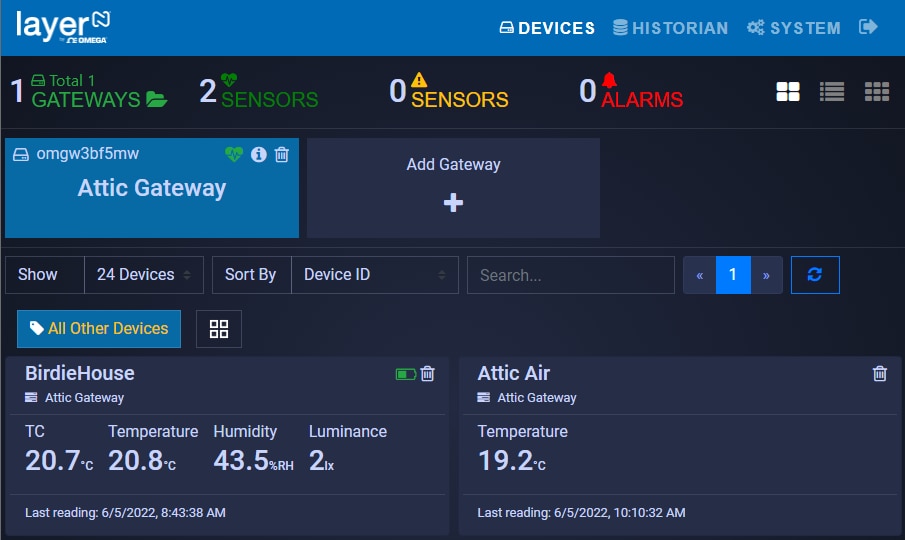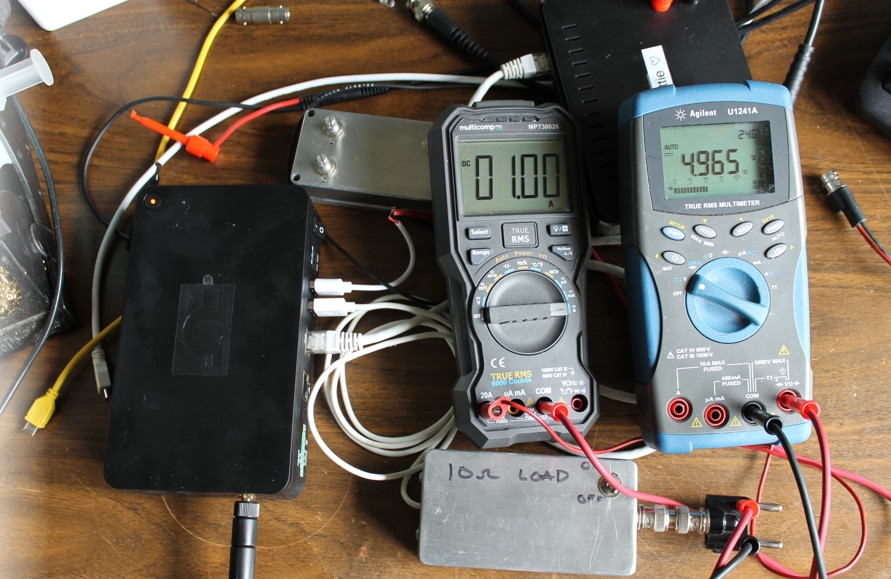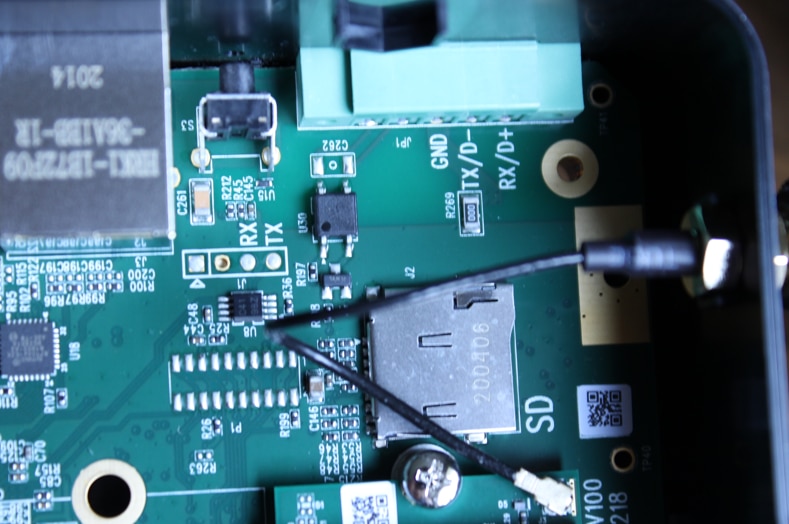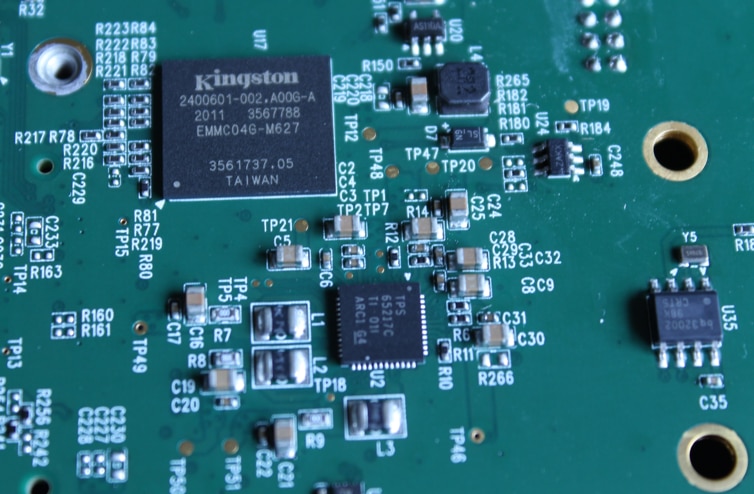My out of box experience with the GW-001-3 was extremely positive. I followed the included quick start guide and was up and running in minutes! I registered the gateway in my Omega cloud account, connected the power cable, and connected the ethernet cable to my router and then powered on the gateway. A minute or two later the gateway gave me the all systems are good, solid green status indicator LED. The gateway was also visible on my omega cloud dashboard:

Transmission Distance
The only actual test I conducted was to disconnected the antenna and see if the wireless smart sensor would still maintain RF connectivity over 30 feet, and it did! What does that mean in terms of actual range, its compilated. But, given they are using genuine Texas Instruments RF SoCs, I have no reason not to trust their line of sight range estimates.
With no devices diagnostics available on the gateway or wireless sensor, and a limit of 1 sample every 90 minutes (for the free subscription tier), I would have to jump through hoops to run an experiment. The frequency hopping span of the layer-n protocol is much wider than the bandwidth of my RTL-SDR (2MHz). So in theory I could log IQ samples with reference to UTC time and look for RF overload events to indicated the gateway is transmitting. Then log gps waypoints with my phone using strava. Start walking into the wilderness pressing the update button on the smart sensor, and see when RF communication begins to cease. I would have liked to see a diagnostic page on the gateway displaying RSSI of the smart sensor that updates in real time.
Light up your sugar shack
I did a quick test of the power over ethernet capabilities of gateway and by attaching some test loads to the 2 USB ports on the gateway. Before applying any load to the USB ports I recorded the gateways idle POE power consumption to be:
Vin: 50V, Iin: 36mA -> Vo: 5.00 V, Io: 0.00A
I applied a constant current load of 1A to one of the gateway’s USB ports. I connected second disabled load box to in order to sense the USB output directedly at the USB connector.

Vin: 50V, Iin: 155 mA -> Vo: 4.964V, Io: 1.00A
dPin: 5.95W, dPo: 4.964W, eff: 83 %
An efficiency of 83% is absolutely great, hypothesizing that the POE doesn’t directly buck down to 5 V, would Imply a second buck converter in the power path. So each converter may very well be operating at 91% (0.91*0.91=0.83).
The USB outputs could easily power a 5W LED indicator/sign, or any number of complex smart sensors too!
What’s Inside
A treasure trove of brand name components!





AM3353 https://www.ti.com/lit/ds/symlink/am3358.pdf
TPS2051 https://www.ti.com/lit/ds/symlink/tps2051.pdf
ISL3330 https://www.renesas.com/us/en/document/dst/isl3330-isl3331-datasheet
LAN8720 http://ww1.microchip.com/downloads/en/devicedoc/00002165b.pdf
LAN8710A https://www.farnell.com/datasheets/1686378.pdf
EMMC04G-M627
TPS65217x https://www.ti.com/lit/ds/symlink/tps65217.pdf
RTC, BQ32002, https://www.ti.com/lit/ds/symlink/bq32002.pdf
POE, https://www.ti.com/lit/ds/symlink/tps23755.pdf
Stay tuned!
In my application I indicated I intended to have fun and spread good vibes. I certainly have had fun so far and have enjoyed experimenting with the Omega Layer-n ecosystem. In my final blog I will try to summary my experiences are related them to Maple syrup production (L)
Take care and thanks for reading!
